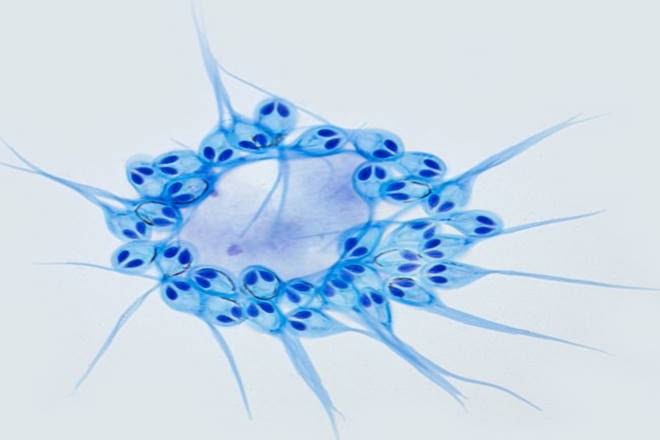
Henneguya Salminicola | 27 Feb 2020
- Scientists have discovered an animal Henneguya Salminicola which does not need oxygen to produce the energy needed for its survival.

- It is a tiny, less than 10-celled parasite which lives in the muscles of salmon fish.
- It does not not have a mitochondrial genome.
- Mitochondria is the “powerhouse” of the cell, which captures oxygen to make energy.
- Its absence indicates that the parasite does not breathe oxygen.
- It is a relative of jellyfish and corals and as it evolved, it gave up breathing and consuming oxygen or became anaerobic to produce energy.
- However, it is not yet clear how the parasite generates energy. It may be drawing it from the surrounding fish cells or it may have a different type of respiration such as oxygen-free breathing, which typically characterises anaerobic non-animal organisms like fungi, amoebas or ciliate lineages.
- The discovery bears enormous significance for evolutionary research.
- Aerobic respiration was thought to be prevalent in animals but now it is confirmed that animals can survive with anaerobic respiration.
Source: IE

